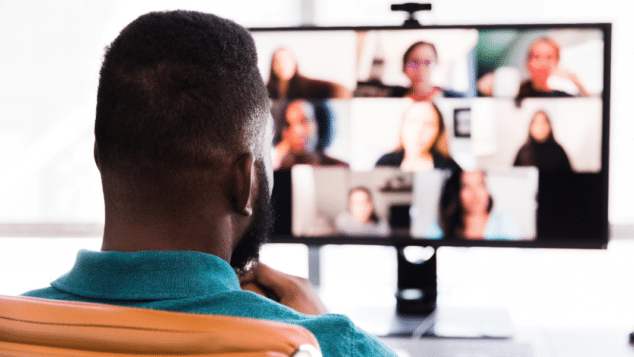Healthy Options for Meetings

New Year’s Resolutions of losing weight and getting “healthy” abound. Meeting attendees are always asking for healthier options when it comes to food.
And even if they’re not asking, there is increasing evidence linking healthy food choices to better learning and retention of information, which is reason enough to move in the direction of healthier meetings. So, what can you do?
Offering healthier food and beverage options is an obvious choice. Instead of cookies, serve nuts. Instead of ranch dip with vegetables, choose the healthier option of hummus. If the chef is willing to work with you, ask for his or her suggestion for a creative way to offer healthier options. In some cases, you’ll find a chef eager to do this for clients, if only they’d ask. And remember, “organic” doesn’t always mean “healthier.”
Does the hotel have a spa that has healthier menus than the standard banquet menus? See if they’ll work with you using the spa menu instead. With so many people on low carb diets, making menu selections where attendees don’t have to use breads is an easy fix.
Many organizations are also doing what they can to get people moving. The Association for Public Policy Analysis and Management in Washington, DC held High Intensity Interval Training for the first time in 2018, offering the program in the early mornings to get people ready for the day. While only 20 attendees participated (about 1 percent of their attendance) the buzz surrounding it was enough that they plan to continue it in the future.
Another popular option is a Fun Run/Walk. Early one morning a number of your attendees and exhibitors gather for a 5k walk or run. Note that many locations require city permits for the run, so you’ll want to make sure you are in compliance, and it is wise to have participants sign a waiver releasing the organization from responsibility for injury, etc. According to the Harvard Health Blog, “…in a study done at the University of British Columbia, researchers found that regular aerobic exercise, the kind that gets your heart and your sweat glands pumping, appears to boost the size of the hippocampus, the brain area involved in verbal memory and learning.” So not only will those who participate benefit in fitness, they are likely to learn better, too.
Do your hotels offer complimentary access to their fitness centers? If not, add that as a concession in your hotel contracts. While not a formal activity, this will be attractive to your every day runners and exercisers. And perhaps some who don’t normally use the fitness area will do so if it’s included and promoted well. However, if your event is heavily scheduled from early morning into the evening with education, activities and functions, you may want to re-think the pace. Not only will “white space” within the meeting allow for some of those fitness activities, it also promotes reflection on what was learned that day which helps lock it in for application and use in participants’ own workplaces.
Healthy activities do not need to be high impact. Offering yoga in the early morning or at lunch helps everyone clear their minds and work on their flexibility which will come in handy if the location of your meeting is spread out and people have lots of walking to do just to get to their sessions. Yoga, tai chi and meditation are low-impact options that all help with focus and preparation for learning and don’t require much space or equipment. And all can be done while seated, if your folks are less active, have accessibility challenges, or just don’t want to work up a sweat. The hotel health club may be able to provide an instructor, or suggest a resource for finding a local provider, and most are familiar with audiences of all types and skill levels, as well as adjusting their instruction to a seated group. A potential bonus—for a modest additional fee, the instructor may be willing to hold a casual mini-session on a related topic, depending on the individual’s expertise.
During breaks, offer an opportunity for attendees to stretch. This can be a standing-room-only gathering that will help limber up attendees who may have been sitting for too long. There are companies and individuals who offer this service, either with a live instructor in the room to lead a group stretch-and-move activity, or videos played either for the full group or in a nook where small groups can stop by for a few minutes as they pass by.
The American Public Human Services Association has a dedicated “Wellness Lounge” where massages are offered throughout the day. The Association of Public-Safety Communications Officials International rotates yoga, Zumba, and bootcamp during their annual meetings, attracting about 5 percent of their attendance. In addition, they always make sure to offer an educational session or two about healthy eating and living.
You want to provide healthier options, but your food and beverage budget hasn’t caught up to the times? Ideas that may help ease into it include:
- Substitute: For example, ask for brown rice as a side instead of the potatoes listed on the menu, or ask for a second vegetable, or the salad, in place of the starch.
- Eliminate: Maybe soup (or even salad if there are veggies in the main meal) isn’t necessary – ask for it to be eliminated and the meal price dropped accordingly.
- Defer: If dessert is included in the banquet meal price, ask for it to instead be served with the afternoon break (and of course ask if fruit can be substituted, or perhaps there can be a mix of fruit and sweets).
- Reduce: Request smaller portions, especially if you do offer high-calorie items like cookies and muffins. No one needs a giant cookie or a muffin they can’t even pick up with one hand, and we’ve all see it many times. So much waste is created, because most folks don’t really want that much anyway.
If your budget doesn’t give you the flexibility for new expenses in this area, focus on what you have to work with.
- One suggestion is to acknowledge that meetings often entail a lot of walking, so have a contest for who hits the most steps—per day and throughout the event. Most folks have or can easily download a step-counter app on their device if they wish to participate, and some meeting apps offer gamification features that already include this. Prizes can be a tangible item like a personal fitness device, or a gift card, a freebie to next year’s event or other association item (book, job posting, educational event credit, etc.), all relatively low-cost.
- Also, you can provide a list of nearby fitness options such as walking and running routes, suggest classes attendees can take on their own at local facilities, a reminder sheet with tips for making healthier choices when traveling and attending meetings, and so on.
- If your event features an exhibit area or sponsoring companies, perhaps one or more of them will pitch in to support costs toward a healthy break or a wellness-related activity, in exchange for being credited with signage or appropriate logo placement or a mention from the podium.
- Another possibility, if the organization’s leadership is on board with promoting health and wellness at the meeting, is to have the food or activity “sponsored” by the board of directors or a particular committee. While the funding would still (likely) come from the organization’s coffers, the added emphasis should garner more participation, and those leaders can become ambassadors to encourage it. The involvement of leadership may in turn build momentum and make it easier to add funding in future budgets.
Those executing events in the scientific and medical realm may need to use caution in choosing materials to share, speakers to select and activities to offer, as members may expect evidence-based interventions only, consistent with how the organization itself manages and shares information. In this case, be sure there are solid resources, preferably including peer-reviewed journal articles, to back up any assertions or claims made before promoting your great idea.
Thank you to the following individuals who shared their thoughts and activities for this article: Joyce L. Paschall, CAE, CMP-HC, CMM; Donna Jarvis Miller, CMP, CEM, American Public Human Services Association; Patricia Giannini Henry CAE, Association of Public-Safety Communications Officials International; Tara Sheehan, Association for Public Policy Analysis and Management.
Tags
Related Articles
What to Wear to the Honors Gala 2025: SHINE ON in Style
Get ready to sparkle, shimmer, and most importantly—shine! Association Forum’s Honors Gala 2025 is on…
Double Your Footprint: Enhancing Conferences with a Hybrid Event Workflow
By combining on-site engagement with a digital experience, hybrid events can attract diverse audiences, boost...
The Emergency Nurses Association Utilizes Design Thinking to Reimagine its Awards Ceremony
In a prime example of intrapreneurship, the ENA utilized design thinking to innovate within the...




